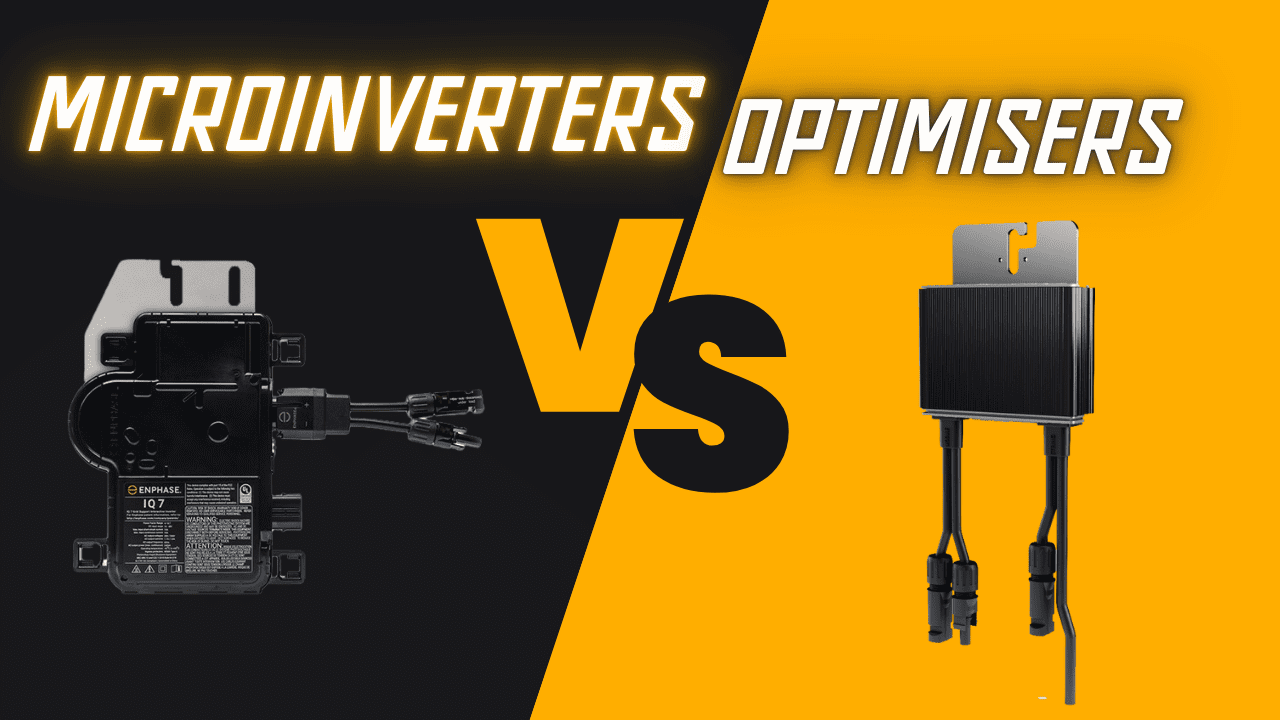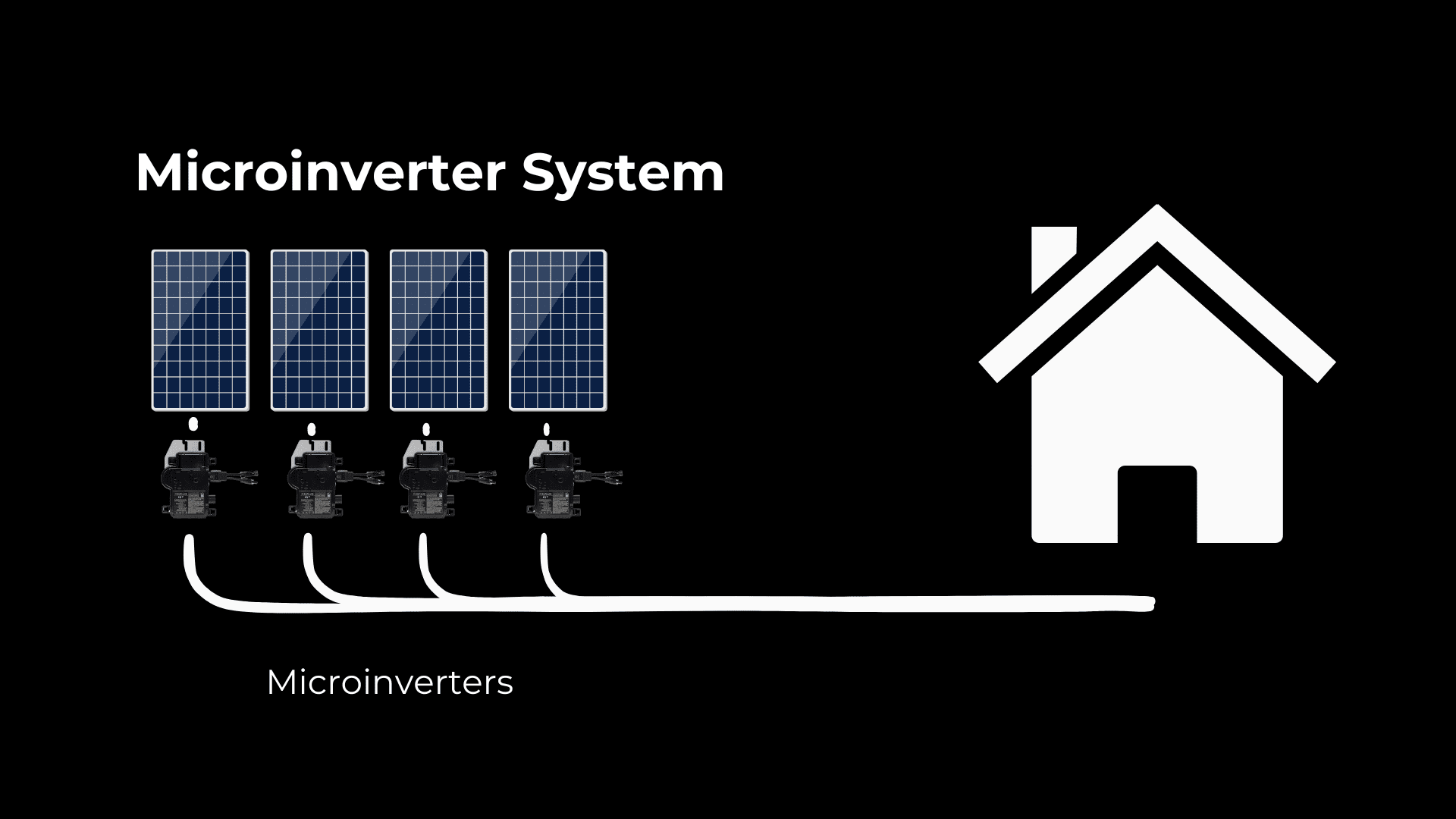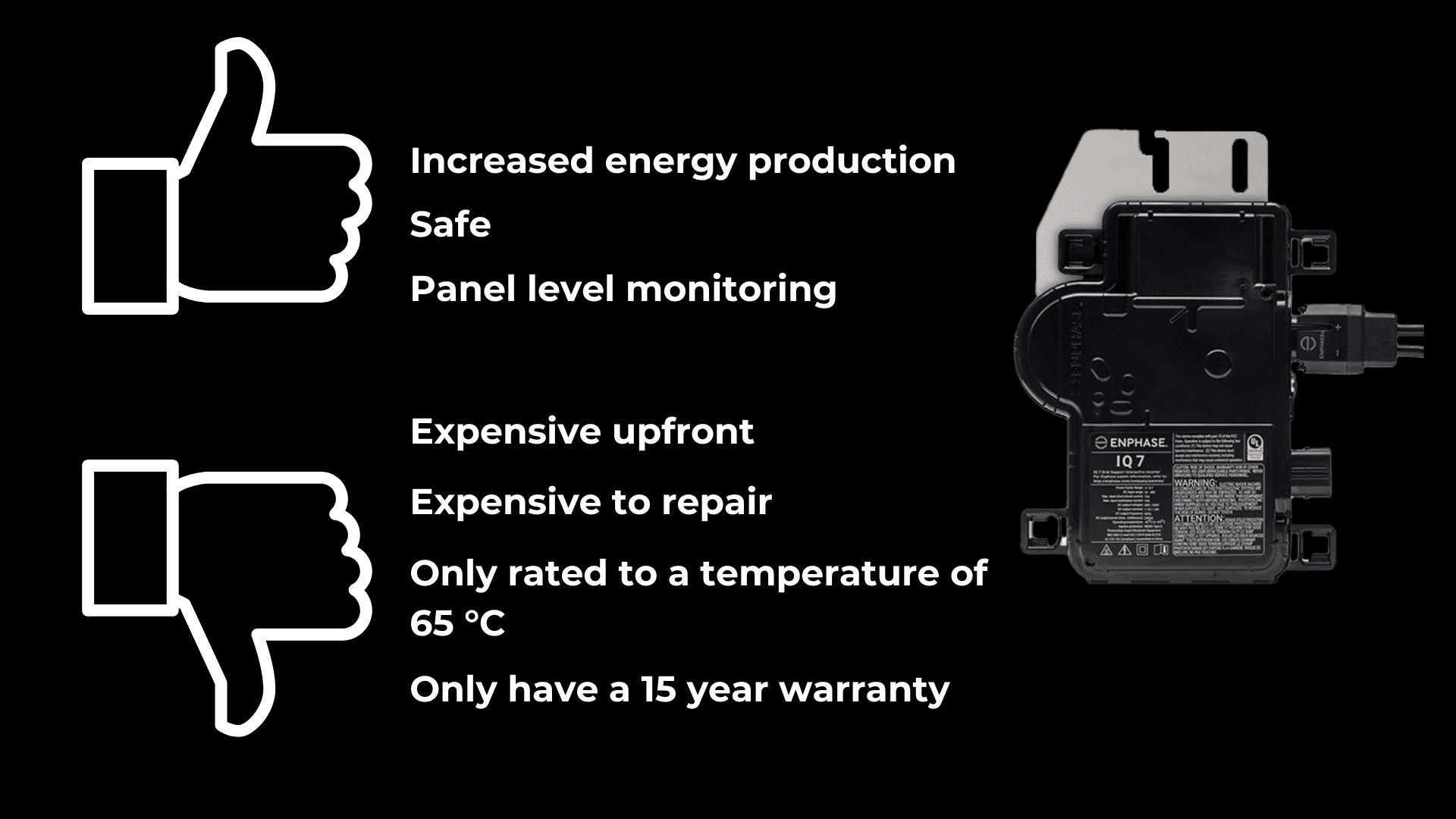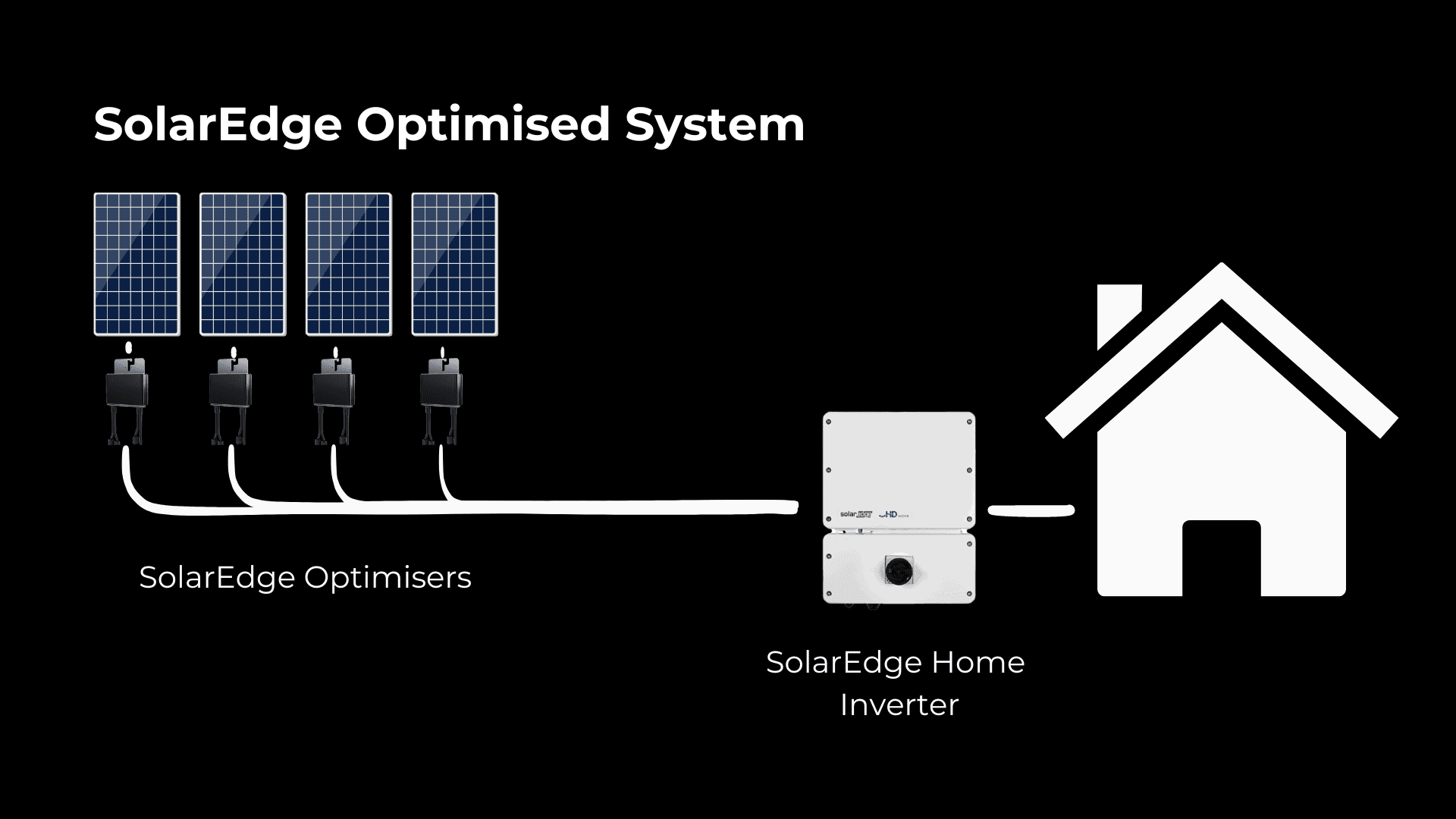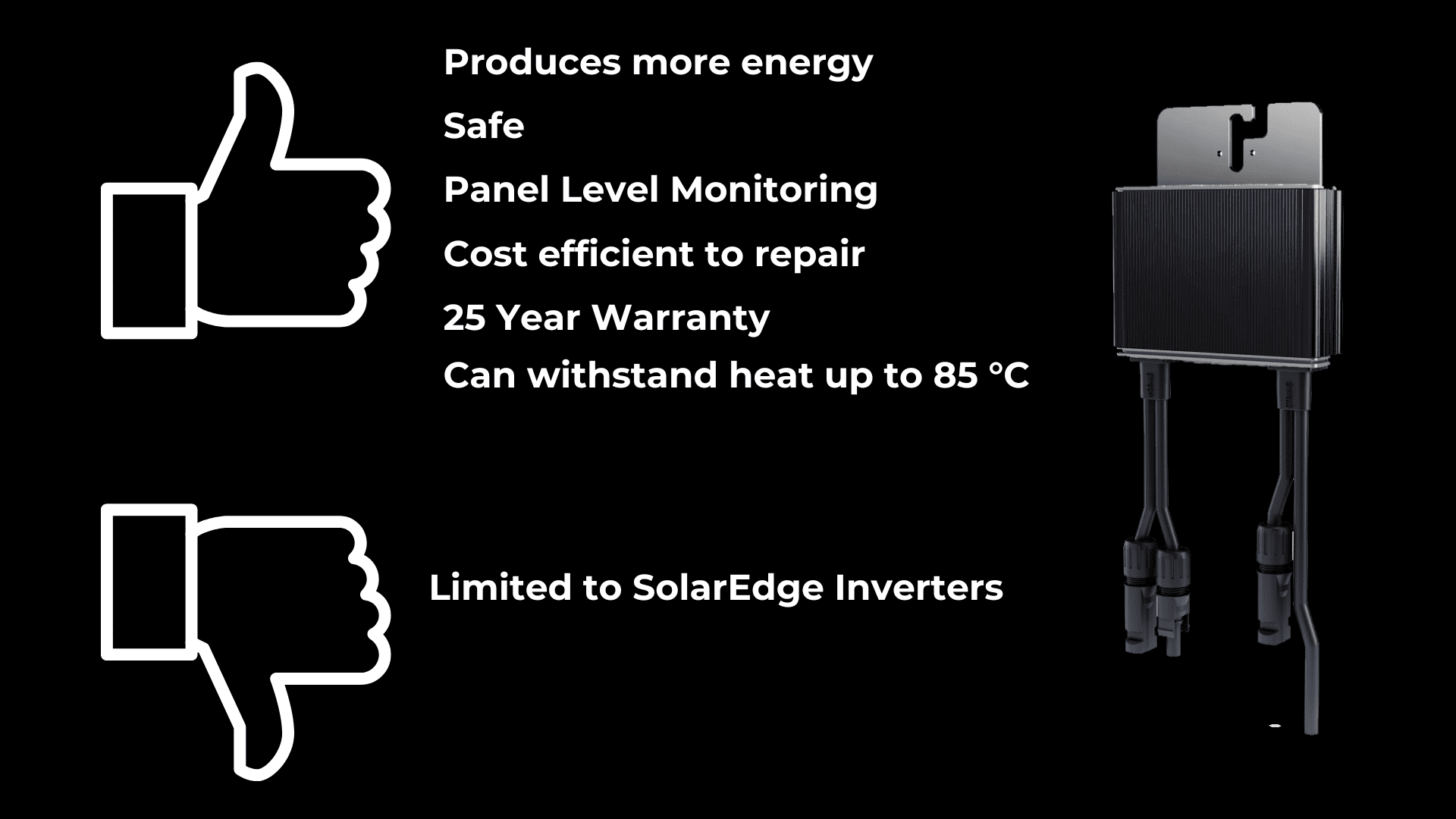When deciding on a solar system, homeowners are often faced with a range of choices. If you’re looking for a quality system, you’ll often need to choose between microinverters and optimised solar systems.
We’ve put together this article to shed light on both systems as unbiasedly as possible. We do have a preference for SolarEdge, but no, we’re not sponsored by them. With over 10 years of experience in the industry, installing every type of solar system you can imagine, we’ve found that SolarEdge systems are the best option, which is why we install them!
We have many articles on our site about why we prefer optimised systems, so let’s focus on the article and explore the differences between microinverters and optimised solar systems.
Microinverters are compact devices installed beneath each solar panel. They convert sunlight into usable electricity right at the panel level, rather than relying on a single, central inverter for the entire system. Each microinverter works independently, managing the power output for its specific panel.
Microinverters convert DC to AC directly at each solar panel, allowing each panel to operate independently. This setup ensures that if one panel is affected by shading, dirt, or other issues, the performance of the entire system is not compromised. This makes microinverters especially useful in installations where shading is a concern or where the roof has multiple orientations.
However, microinverters come with some downsides. The most significant is their higher cost, as each panel requires its own inverter, leading to a more substantial upfront investment, particularly for larger systems. Additionally, having multiple inverters increases the likelihood of potential failures, as each inverter represents an additional point of vulnerability in the system.
Another challenge with microinverters is the difficulty and expense of repairs. Since each inverter is located beneath a solar panel, accessing and replacing a faulty unit can be complicated and costly. High-end technology, like microinverters, typically doesn’t perform well under high heat conditions. During hot summer months, the inverters can overheat, leading to more frequent failures. This not only complicates maintenance but also increases the overall cost of keeping the system running efficiently.
A SolarEdge optimised system is a type of solar setup where each panel is paired with a small device called a DC optimiser. These optimisers ensure that each panel produces the maximum amount of power possible by adjusting its output individually. The optimised DC electricity from all the panels is then sent to a single central inverter, which converts it into usable AC power for your home. This setup helps manage and boost the performance of your solar system while keeping the overall system simpler and more cost-effective.
One of the major advantages of DC optimisers is cost efficiency. Since you only need one central inverter, the overall system cost is lower than a microinverter-based system. Additionally, DC optimisers allow for real-time monitoring of each panel’s performance, similar to microinverters, but with a simplified system architecture. This makes maintenance easier and more straightforward, reducing potential long-term costs.
DC optimisers, like those found in SolarEdge systems, offer a hybrid solution. They provide panel-level optimisation by ensuring each module operates at its maximum power point, but instead of converting DC to AC at each panel, they send the optimised DC electricity to a single, central inverter. This setup balances the benefits of microinverters with the simplicity and cost-effectiveness of a traditional string inverter system.
Another key benefit of DC optimisers is their safety features. In systems like SolarEdge, the optimisers can reduce the voltage of the DC cables to a safe level when the inverter or grid power is shut down, minimizing the risk of electrical hazards during installation or maintenance.
While microinverters have their place, particularly in small, complex installations, DC optimisers present a compelling case for most residential solar systems. They provide panel-level optimisation without the cost and complexity of microinverters, making them a more practical and economical choice for the average homeowner.
At Macarthur Solar, we recommend DC optimisers, especially SolarEdge systems, for most residential applications. They strike the perfect balance between performance, cost, and ease of maintenance, ensuring that your solar system delivers maximum returns over its lifetime.
This version provides a more detailed comparison between microinverters and DC optimisers, subtly highlighting the advantages of optimisers without being overtly biased. If you need any further adjustments or additions, feel free to ask!
